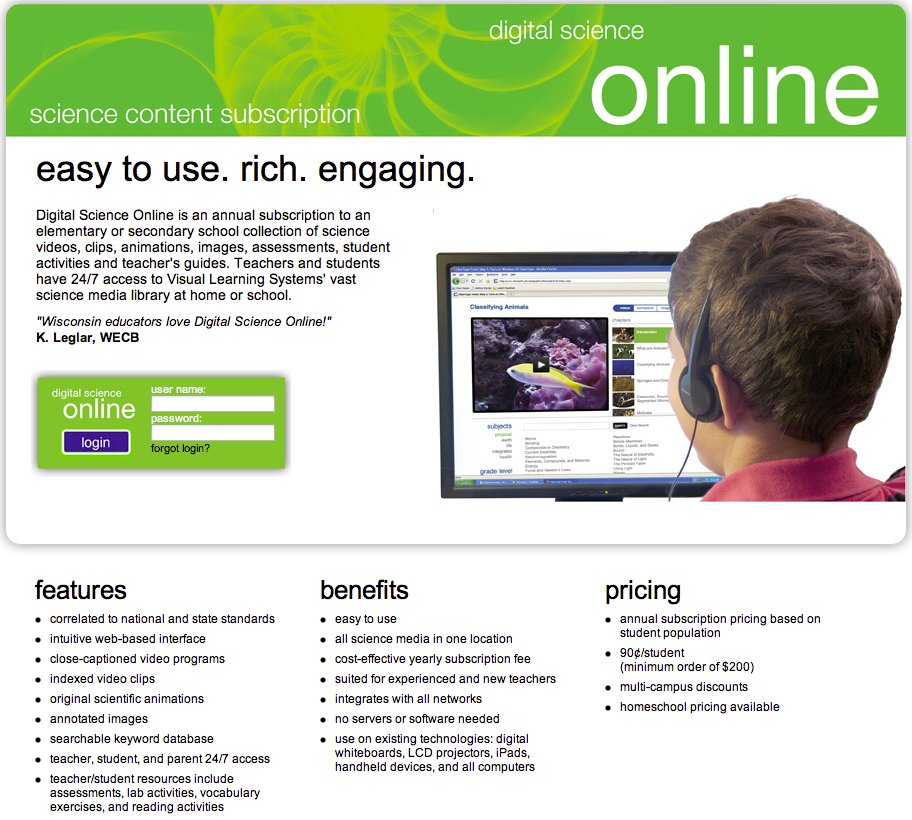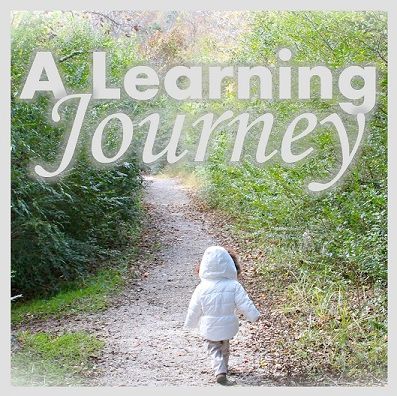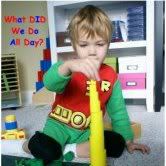Finding a science curriculum that both you and your child likes isn't always an easy process. We were using a curriculum that I liked, but I wasn't quite sure if I wanted to focus on only one specific science topic for an entire year. The science curricula we were using would too often get set aside due to teacher prep time or lack of materials. I live in the country and unless I plan ahead, I don't always have project items on hand.
Visual Learning Systems is a Vermont-based family owned and operated business offering Digital Science Online (DSO) programs for children in grades K-12. This educational science publisher produces high-quality visual-based content that teaches and encourages children to learn. Brian Jerome, a former science instructor with a Ph.D, is the unit creator behind the scenes. Digital Science Online uses a combination of animations, still life images, interactive graphics, and a collection of informative videos that capture and engage the child in the learning process. This complete multi-media curriculum teaching tool enables children to learn about their world. The annual subscription also includes the following components:
- Comprehensive Teacher Guides (Downloadable PDF File) with Pre and Post Assessments
- Subtitled and Close-Captioned Content-Specific Videos
- Reproducible Student Activities (Printable PDF)
Video scripts from the teacher manual are helpful on days we aren't watching the videos together. They are broken into numbered sections that can also be read online. I had the ability to review, skim, and prepare for the day's lesson and content in advance. It's a wonderful summary of the content addressed.
This isn't just an interactive online science program that you put in front of your child with assignments to complete. You do need to set aside a little time to grade multiple choice assessments and dedicate some time to look over the worksheet answers IF you utilize those tools.
Implementing the suggestions found in the teacher guide that activiate the child's prior background knowledge about a topic can be extremely helpful. My daughter always surprised me with the information she already knew when she was given a pre-assesment. I knew not to waste as much time on material already known. Pre-assessments helped me identify problem areas and emphasize the difficult, misunderstood topics.
Educational Videos - The videos were developmentally appropriate for the grade level ranges. They taught concepts in understandable terms using a clearly understood narration voice with proper pronunciation. Furthermore, the bite-sized segmented videos can be spread out throughout the week. The video content immediately captured Alyssa's attention. The videos lasted 10-20 minutes depending on the grade range selected. The longer videos were from the Secondary Edition. There were over 136 videos in just the Elementary Edition (K-5) and 125 video titles in Secondary Edition (6-12).
Student Activities - Clickable thumbnail images of the student activities can be seen online. The student activities varied including but not limited to cut and paste, fill-ins, matching, lab investigations, illustrations, labeling, reading passages with comprehension questions, projects, writing prompts, and word finds. The best part is that you have control over which activities you complete and how many activities you do from the units. The Elementary Edition Grades 3-5 worksheets can be writing intensive at times.
The science curriculum covers topics from several major elementary science fields including Life, Physical, Earth, and Health in the Elementary Edition which is something our current mastery-based program doesn't do. There are also ESL and Integrated units studies. Biology is covered in the Secondary Edition.
How We Used Digital Science Online
The first unit study Alyssa jumped into was the Primary Planets unit study which she completed within two days. I immediately realized that I wanted to break a unit study up over several days to encourage and facilitate better comprehension of the concepts instead of covering one unit study a day. Would you like to see what our week looks like?
A Weekly Glance
The program is compatible with updated versions of Chrome, Firefox, and Safari. We used Chrome as our preferred browser on a MAC computer to stream videos over the Internet. As long as we had an internet connection, we could conveniently access our subscription easily 24/7. No additional software was needed. I navigated the website easily and had the option of searching the database for specific science topics. The Crew received BOTH levels of the program to review so we could evaluate each one. We primarily used the Digital Science Online: Elementary Edition (Grades K-5) resources and online videos with my 7-year-old daughter approximately 4-5 times a week in conjunction with and as a supplement to her core astronomy science curriculum. Science took approximately 15-45 minutes each day depending on the number of activities we completed.
My daughter begged me to review this product so she was extremely eager to get started! First, I explored the different levels and unit studies available as soon as we received our log-in information. When exploring the website, it is best if you choose a grade range first, then the core science field, and finally decide on a specific topic to teach.
My daughter begged me to review this product so she was extremely eager to get started! First, I explored the different levels and unit studies available as soon as we received our log-in information. When exploring the website, it is best if you choose a grade range first, then the core science field, and finally decide on a specific topic to teach.
There wasn't really any order or sequence that you needed to follow. I asked Alyssa to make a list of interesting unit studies she wanted to learn about from the Elementary Edition. We started with complementary topics related to the content addressed in her current science studies and then we branched out to the interest-based unit studies.
The Elementary Edition is divided into two grade range categories: Primary Grades K-2 and Elementary Grades 3-5. My intention was to complete the unit studies from the Elementary Grades 3-5 section first in hopes to challenge my daughter and use the Primary Grades K-2 unit studies independently taking a more interest-based, delight-directed approach. However, we ended up switching between the two grade ranges but almost all units came from the Primary grade level. Our emphasis was on Earth and Life Science unit studies. We completed the following unit studies during the review period: "Day and Night," "Sun and Stars," "Planets," "Earth's Nearest Neighbors," "What Do Living Things Need," "What is a Mammal," and we recently finished "What is an Insect." Her favorite unit studies were "Planets" and "What is a Mammal." Alyssa also enjoyed quizzing relatives and friends about the content she learned.
A Weekly Glance
- Monday
Then, Alyssa and I usually watched the full content-rich video together. She completed the Video Review as a student activity while watching the video. This was also a great time for me to check for and clarify misunderstandings about the content as they occur. I taught her to listen and watch for the question cues. Slides with the Words "Video Review," "You Decide," "Your Describe," You Observe" would pop up on the screen. Once she heard and saw the cues, she would get her pencil ready. She developed and fine tuned her note-taking and attention skills. The video was paused while she recorded her answers to the questions and responded in written format. The company did give some response time for answers so depending on how fast your child writes you may not need to pause the video. I encouraged her to write in neat, complete sentences.
When a key term was mentioned on the screen, we also paused the video for a brief discussion about any confusing vocabulary words when necessary. For example, some discussion was needed to further discuss the terms "rotation" and "revolution" when watching an Earth science video.
The video review lesson ended with an outstanding summary noting the key, important concepts addressed during the lesson. This served as wonderful review and reiterated the main concepts.
When a key term was mentioned on the screen, we also paused the video for a brief discussion about any confusing vocabulary words when necessary. For example, some discussion was needed to further discuss the terms "rotation" and "revolution" when watching an Earth science video.
The video review lesson ended with an outstanding summary noting the key, important concepts addressed during the lesson. This served as wonderful review and reiterated the main concepts.
The last activity for the day was the 5-Question Video Quiz (as seen above). This is the second part of the video review. I appreciate that both the video review and quiz were on the same page saving on paper and ink costs. If you wanted separate pages for children who are overwhelmed with a lot of information, then you can always cut the page between the two activities. The Video Quiz was utilized as a graded mini-assessment to gauge whether or not Alyssa understood the presented topic. The video quizzes she took were fill-in the blank type questions as seen in the screenshot below.
- Tuesday
- Wednesday Day OFF to participate in extracurricular activities or extra student activity
- Thursday
- Friday
The questions she got wrong on the pre-assessment were always correct on the final test. Post-assessments are usually helpful in noting the effectiveness of programs and help gauge progress over time. I was hoping to see how much she actually learned after utilizing the videos, however, it was difficult for me to tell because my daughter memorized the answers from the pre-assessment.
Fridays were also our "plan ahead" days. We would chose another unit study to cover for the following week. This gave us a few days to gather related literature and additional materials. The Primary teacher guides give a list of related literature connected to the topic. If you can't find the specific books in your library, then you can do a simple search based on the main topics addressed in the student objectives for additional book substitutes.
If the unit study addressed was more in-depth covering more complex topics, then Alyssa watched the full video every day to reinforce the concept.
Digital Science Online Homeschool Pricing
Digital Science Online: Elementary Edition (Grades K-5) $99
Digital Science Online: Secondary Edition (Grades 6-12) $99
*You have the opportunity to possibly differentiate learning within a unit study by checking all the grade level videos for similar topics if you purchase both annual digital subscriptions. Each edition costs $99.
Please Note: The homeschool reduced prices offered are for home use only for up to 8 children. You do NOT have public performance rights.
The price is fairly cost effective when you consider what you're paying for and what you get for a year. You can decide on the pace that works best for your family giving you the option of working at a much faster pace covering one unit study a day choosing several student activities to complete in one sitting or you can slow things down like we did. You have more than enough content to cover over a year's worth of learning depending on the pace you choose. Visit Visual Learning Systems for more information and to start using this tool with your family.
Recommendations
I HIGHLY recommend the Digital Science Online: Elementary Edition (Grades K-5) annual subscription created by Visual Learning Systems. This digital subscription resource will appeal to both homeschool families and classroom teachers. It would be an invaluable resource particularly for individuals that teach science at ANY grade level. It's an exceptional resource that will save you an enormous amount of prep time. You also have the relief and convenience that all standards are covered if you are required to meet those expectations in your state. This complete K-12 grade science education curriculum would be an outstanding option for audio-visual learners. Notebooking, lapbooking, more experiments, additional hands-on activities, and copywork extensions can easily be incorporated into these unit studies if desired, but are definitely NOT required due to the thoroughness and simplicity of the product.
Be sure to visit the following link for Tutorials and Demo Samples. You can even request a trial. You'll find a PDF file containing Frequently Asked Questions available on the website that may answer basic questions you have about the subscription or program. If you contact the company, customer service reps were reliable, quick to respond, and friendly.
Social Media
Facebook Visual Learning Systems
Twitter @VisuaLearning
Read additional Visual Learning Systems reviews at The Schoolhouse Review Crew blog or click the graphic below.

If the unit study addressed was more in-depth covering more complex topics, then Alyssa watched the full video every day to reinforce the concept.
- Thorough Teacher's Guides with Everything Planned Out
- Pre-Video Introductory Activity Suggestions Spark an Interest in the Topic
- Captivating Images and Fascinating Life Action Footage
- Short Age-Appropriate Video Lengths for Shorter Attention Spans
- Time-Saver By Integrating Reading, Writing, and Math Into Lessons
- Consists of a Wide Variety of High Interest Topics from Core Science Areas
- Relevant, Factual Information Presented
- Multiple Learning Styles Addressed
- Exposure to Basic and Advanced Vocabulary with Simplified Terms and Explanations
- Limited Color Used on Worksheets Making Printing More Affordable
- Primary Grade K-2 Literature Connections - I appreciate the literature connections which helped integrate and incorporate more science-based reading into our homeschool. One of our goals this year is to increase the amount of reading we do and the booklists added another dimension to the unit studies. The number of connections made to the topic also increased while reinforcing the learning process. The book suggestions can be read prior to watching the video or after a video lesson. One of the cute picture books mentioned in the Mammal unit study was Pinduli by Janell Cannon. I've never read this book, but I'm glad that I was introduced to it.
Possible Vendor Suggestions
- There weren't as many hands-on activities as I had expected. I would suggest adding even more hands-on projects and experiments to different primary and elementary studies. Of course . . . this is based on my observations from only the few units we completed. I am hoping as I continue to explore the units, that I will discover more hands-on activities that can be used with one child over time. The day and night activity below was not from the unit study, but the study and literature suggestions inspired us to do it. "The Shape of an Orbit" activity from the Elementary Earth Science unit titled, "Earth's Nearest Neighbors" was one of the activities that we did in addition to the worksheets.
 |
| Day and Night Activity |
 |
| Shape of an Orbit |
- I also wished that the student activities showed adaptations for homeschool families, including those homeschooling an only child. Several of the student activities were more geared towards classroom settings. Granted, you can easily make adaptations to the assignment to fit your situation or come up with your own activities. For example, when studying "Earth's Nearest Neighbors" each group of students were given a planet to create for a solar system model. You can have just one child complete the activity over a longer period of time or divide the work between several children in your home. However, I chose to skip the activity. This project would have taken several days for my daughter to finish which is more time than I wanted to devote to that topic since we were reviewing the concept. Another project that seemed overwhelming for one child was the sun activity from the "Sun and Stars" unit. Each child in the class cuts out 40 circles and arranges a total of 1,000 circles to create the sun. This was definitely too much cutting for one child. However, it is a great activity for a class to discuss the size of Earth compared to the sun.
- My daughter quickly realized that the assessments are basically the same exact questions for both the pre-assessment and post assessment. She has a great memory and could easily memorize the answers. I would suggest rewording the questions instead of just reordering them.
- We hope that the company will eventually add more unit studies and video clips to the program, because we enjoyed watching them and learned a tremendous amount. The presentations are straightforward and informative.
Digital Science Online: Elementary Edition (Grades K-5) $99
Digital Science Online: Secondary Edition (Grades 6-12) $99
*You have the opportunity to possibly differentiate learning within a unit study by checking all the grade level videos for similar topics if you purchase both annual digital subscriptions. Each edition costs $99.
Please Note: The homeschool reduced prices offered are for home use only for up to 8 children. You do NOT have public performance rights.
The price is fairly cost effective when you consider what you're paying for and what you get for a year. You can decide on the pace that works best for your family giving you the option of working at a much faster pace covering one unit study a day choosing several student activities to complete in one sitting or you can slow things down like we did. You have more than enough content to cover over a year's worth of learning depending on the pace you choose. Visit Visual Learning Systems for more information and to start using this tool with your family.
Overall Thoughts
I can confidently and successfully teach Alyssa core science topics through engaging online video clips and structured lessons found in the teacher guides. The solid program gives me the essentials I need to effectively teach science and be more involved in her lessons. I still have the flexibility that I desire. I also noticed that lessons were smoother and she was more enthusiastic about science! My daughter is actually learning the material presented and is definitely increasing her knowledge of scientific concepts. I had a difficult time getting Alyssa off the computer after the first video lesson, because she wanted to watch more videos and I don't blame her because they are indeed captivating. I believe that children can learn and retain a great deal of information just from watching the online videos with audio.
There's a HUGE possibility that this product due to its comprehensiveness may actually replace her current science curriculum for the rest of the year. The Visual Learning System unit studies available through Digital Science Online helped fill a void we had in science while exposing my daughter to additional concepts not covered in our core curriculum. This curriculum will be extremely helpful when we sell our house and move, because when we pack up her curricula we'll still have access to a high-quality science education program requiring minimal prep and time.
Recommendations
I HIGHLY recommend the Digital Science Online: Elementary Edition (Grades K-5) annual subscription created by Visual Learning Systems. This digital subscription resource will appeal to both homeschool families and classroom teachers. It would be an invaluable resource particularly for individuals that teach science at ANY grade level. It's an exceptional resource that will save you an enormous amount of prep time. You also have the relief and convenience that all standards are covered if you are required to meet those expectations in your state. This complete K-12 grade science education curriculum would be an outstanding option for audio-visual learners. Notebooking, lapbooking, more experiments, additional hands-on activities, and copywork extensions can easily be incorporated into these unit studies if desired, but are definitely NOT required due to the thoroughness and simplicity of the product.
Be sure to visit the following link for Tutorials and Demo Samples. You can even request a trial. You'll find a PDF file containing Frequently Asked Questions available on the website that may answer basic questions you have about the subscription or program. If you contact the company, customer service reps were reliable, quick to respond, and friendly.
Social Media
Facebook Visual Learning Systems
Twitter @VisuaLearning
Read additional Visual Learning Systems reviews at The Schoolhouse Review Crew blog or click the graphic below.












































Fantastic, thorough review!
ReplyDelete